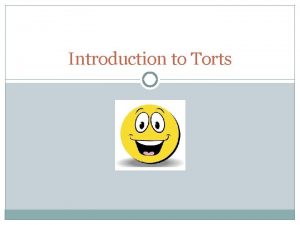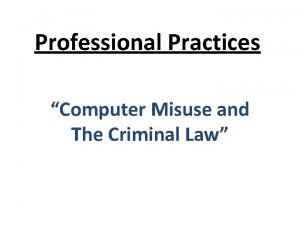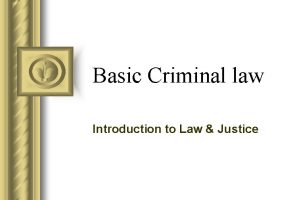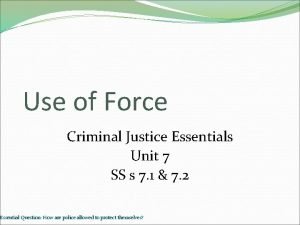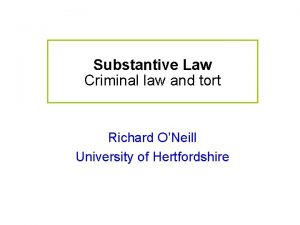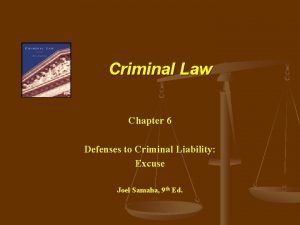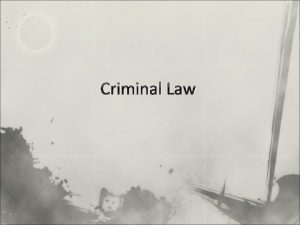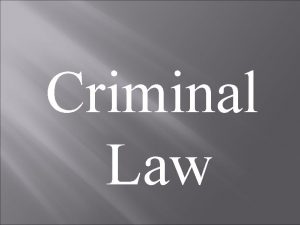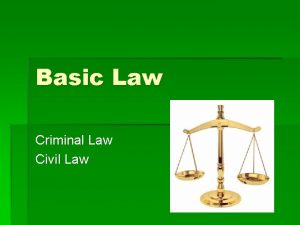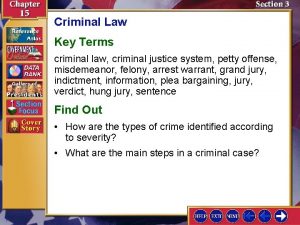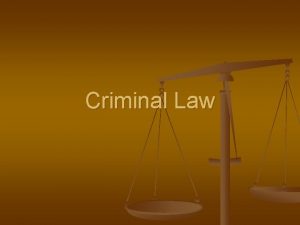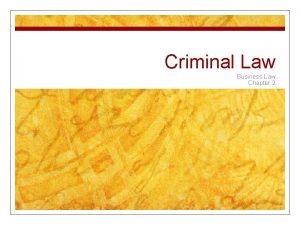Unit 3 Criminal Law Introduction Introduction A Crime








- Slides: 8

Unit 3: Criminal Law Introduction

Introduction A Crime is any act or omission of an act that is prohibited and punishable by federal statute. This is the legal definition of what a crime is. It must be understood that a crime does not have to be an act it can also be an omission. For example, failing to stop at a stop sign is a crime because of an omission on your part.

4 Conditions There also four conditions for an act or omission to be considered a crime: the act must be considered wrong by society the act causes harm to society in general or to those (such as minors) who need protection the harm must be serious the remedy must be handled by the criminal justice system ** As we have mentioned before, what society considers wrong can vary over time and place to place. Law evolves to reflect society’s changing standards.

Introduction Criminal Law: a crime is an offence against the public and society as a whole, not just one person. A person steals from a music store, the owner would have to then increase the prices, forcing others to pay more and have less money to spend on other things. “It is deliberate purpose that constitutes wickedness and criminal guilt”- Aristotle (384 - 322 BCE) What do you think this quote has to do with Criminal Law and Canada?

Introduction Criminal law is the body of laws that prohibit and punish acts that injure individual people, property or the community. The main purposes of criminal laws are to: protect people and property maintain order preserve standards of public decency (we all have to act in a decent manner)

Introduction The Criminal Code: is a federal statute that contains the majority of laws passed by parliament. It lists not only offences, but also the sentences to be imposed and the procedures to follow when trying those accused of crimes. The Code is amended often to reflect changes in society. Before 1867 each province was responsible for creating its own criminal laws. Our laws were inherited from Great Britain. Unfortunately due to each province creating its own criminal laws, there was no consistency in the country. Sir John A. Macdonald pushed strongly for a uniform set of laws, a set that would state that a criminal law would be a law regardless of where you were in Canada.

Introduction The Code is not a complete draft as it includes separate documents that state laws such as: The Controlled Drug and Substance Act The Customs Act The Youth Criminal Justice Act The Food and Drug Act Income Tax Act

Let’s Think… Sect. 43 of Canada’s Criminal Code: - Parents, school teachers or guardians are allowed to use “reasonable force” in disciplining children under their care. - What would you consider “reasonable force”? - Do you think this section reflects society’s values or should it be amended (changed)?

